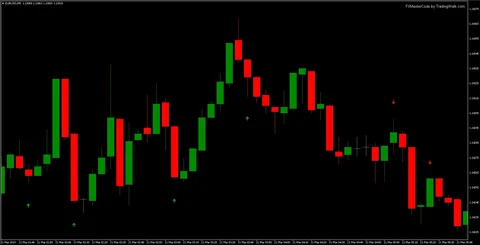Binary signals are automated alerts or indicators that provide traders with insights on potential trading opportunities in the binary options market. These signals are generated using various technical analysis tools, algorithms, or human analysts, aiming to help traders make informed decisions with minimal effort. By following reliable binary signals, traders can improve their chances of executing profitable trades, reducing the guesswork often associated with trading.
The importance of binary signals in trading cannot be overstated. They allow traders to capitalize on market trends without extensive knowledge of technical analysis. High-quality binary signals provide accurate entry and exit points, enabling traders to execute well-timed trades. However, choosing the best binary signals requires careful evaluation of their accuracy, reliability, and suitability for a trader’s strategy.
Evaluating the Accuracy and Reliability of Binary Signals
One of the primary factors to consider when selecting binary signals is their accuracy. Accuracy refers to the percentage of signals that result in successful trades. High-quality signal providers typically offer accuracy rates of 70% or higher. However, traders should be cautious of providers that claim near-perfect accuracy, as this may indicate misleading marketing tactics rather than genuine performance.
Reliability is another crucial aspect to consider. Reliable binary signals should be consistent in their accuracy across different market conditions. Traders should review historical performance records, customer reviews, and third-party verification sources to assess the trustworthiness of a signal provider. Additionally, it is essential to test binary signals on a demo account before using them in live trading to evaluate their effectiveness firsthand.
Choosing Between Free and Paid Binary Signal Providers
Traders have the option to choose between free and paid binary signal providers. Free binary signals are often available through online trading communities, social media groups, or brokers offering promotional services. While free signals may be useful for beginners, their accuracy and reliability are not always guaranteed. Many free signal providers operate on a volume-based approach, prioritizing quantity over quality.
Paid binary signals, on the other hand, generally offer more accurate and reliable trading recommendations. These signals are generated by professional analysts or advanced algorithmic models. Subscription-based services often provide additional features, such as real-time alerts, personalized recommendations, and risk management tools. When considering paid binary signals, traders should conduct thorough research to ensure they are investing in a reputable and transparent service.
Assessing the Compatibility of Binary Signals with Your Trading Strategy
Every trader has a unique trading strategy, and it is essential to choose binary signals that align with specific trading goals. For example, short-term traders may benefit from signals designed for high-frequency trading, while long-term traders might prefer signals based on trend analysis and fundamental data. Understanding the methodology behind a signal provider’s recommendations can help traders determine whether the signals are suitable for their strategy.
Additionally, traders should consider the level of automation provided by a signal service. Some binary signal providers offer fully automated trading systems that execute trades on behalf of users, while others provide manual signals that require trader intervention. The choice between manual and automated signals depends on personal trading preferences, risk tolerance, and experience level.
Testing and Optimizing Binary Signals for Maximum Profitability
Before fully integrating binary signals into a trading strategy, traders should test their effectiveness using a demo account. A demo account allows traders to analyze the accuracy and reliability of signals without risking real capital. This step is crucial for identifying potential weaknesses and making necessary adjustments before live trading.
Optimizing binary signals for maximum profitability involves monitoring their performance over time and making necessary modifications to the trading approach. Traders should track key performance indicators (KPIs), such as win rate, average return per trade, and drawdowns, to refine their strategy. Additionally, combining binary signals with other technical and fundamental analysis tools can enhance decision-making and improve overall trading results.
Conclusion
Choosing the best binary signals for a trading strategy requires careful consideration of accuracy, reliability, cost, compatibility, and optimization techniques. By thoroughly researching and testing signal providers, traders can enhance their chances of success in the binary options market. Whether using free or paid signals, the key to profitability lies in selecting a reputable provider and integrating signals effectively into a well-structured trading plan.
